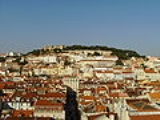
and largest city of Portugal
with a population of 545,245 within its administrative limits on a land area of 84.8 km² (33 sq mi). The urban area of Lisbon extends beyond the administrative city limits with a population of 3 million on an area of 958 km² (370 sq mi), making it the 9th most populous urban area
in the European Union
. About 2,831,000 people live in the Lisbon Metropolitan Area
(which represents approximately 27% of the population of the country).
1147 After a siege of 4 months crusader knights led by Afonso Henriques, reconquered Lisbon.
1147 The Portuguese, under Afonso I, and Crusaders from England and Flanders conquer Lisbon after a four-month siege.
1493 Explorer Christopher Columbus arrives back in Lisbon, Portugal, aboard his ship Niña from his voyage to what is now The Bahamas and other islands in the Caribbean.
1499 Portuguese explorer Nicolau Coelho returns to Lisbon, after discovering the sea route to India as a companion of Vasco da Gama.
1500 The fleet of Pedro Alvares Cabral leaves Lisbon for the Indies. The fleet will discover Brazil which lies within boundaries granted to Portugal in the Treaty of Tordesillas.
1502 Vasco da Gama sets sail from Lisbon, Portugal, on his second voyage to India.
1531 Lisbon, Portugal is hit by an earthquake--thousands die.
1541 Francis Xavier leaves Lisbon on a mission to the Portuguese East Indies.
1588 The Spanish Armada, with 130 ships and 30,000 men, sets sail from Lisbon heading for the English Channel. (It will take until May 30 for all ships to leave port).
1588 The last ship of the Spanish Armada sets sail from Lisbon heading for the English Channel.

